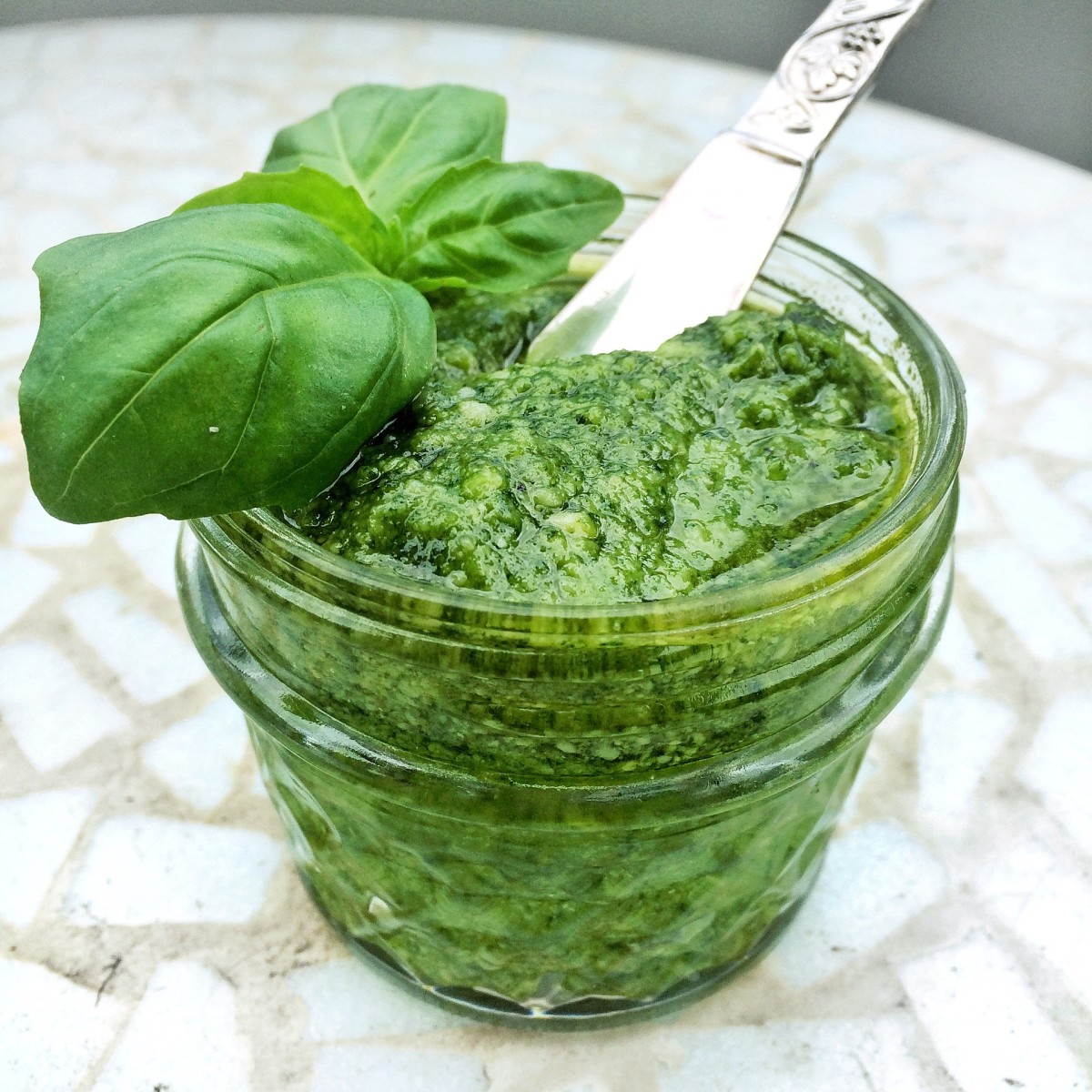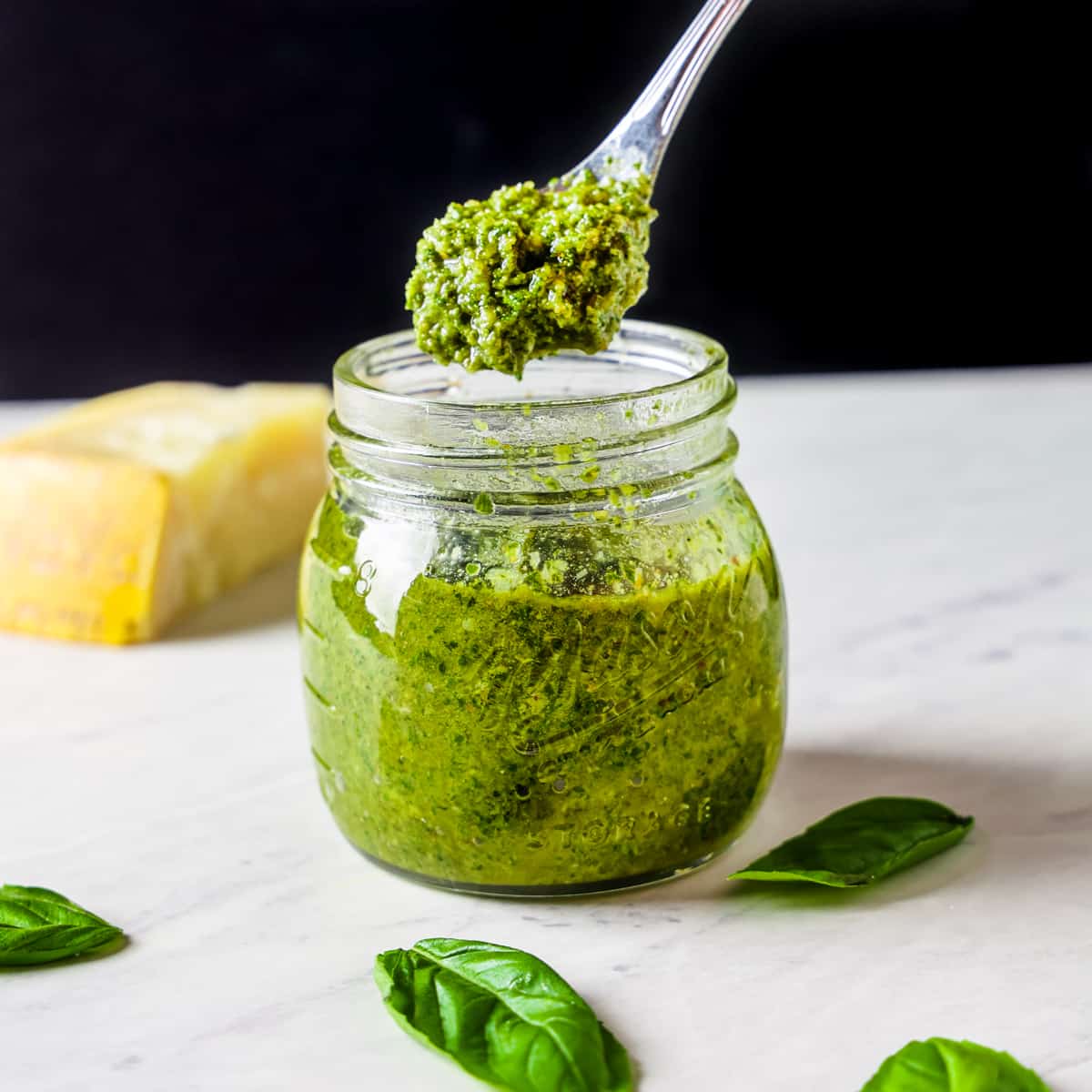
The Origins of Pesto: A Culinary Journey Through Time
Pesto has a rich history, tracing back to Genoa in the Liguria region of Italy. Its roots delve deep into culinary tradition, believed to stem from the ancient Roman sauce “moretum”. This paste was made from herbs, garlic, and cheese, resembling what we know as pesto today. There’s evidence suggesting early versions of pesto being enjoyed as far back as the Roman times.

In its purest form, traditional pesto, or ‘pesto alla genovese’, thrives on simplicity. The core ingredients include fresh basil leaves, coarse salt, garlic, high-quality Parmesan or Pecorino cheese, pine nuts, and a drizzle of extra-virgin olive oil. Historically, pesto was pounded and ground using a mortar and pestle, which is the origin of its name – pesto comes from the Italian word ‘pestare,’ meaning to pound or crush.
The evolution of pesto saw it become a culinary embodiment of its region. Genoese cooks selected sweet basil for its vibrant color and delicate flavor, an ideal representation of their local produce. Through the centuries, pesto has retained its roots, being passed down through generations, each adding their own subtle touch without straying far from its traditional beginnings.
Despite the advent of modern appliances, there remains a charm and depth in the practice of hand-chopped pesto. It connects us to history, engaging us in a timeless ritual that has seasoned Italian cuisine for generations. By embracing the old ways, we partake in a culinary journey, savoring flavors that are steeped in tradition and authenticity.
Selecting the Right Ingredients: Basil, Garlic, Parmesan and Nuts
Choosing quality ingredients is key to amazing pesto. Look for fresh basil with vibrant green leaves. Small, young leaves often have a sweeter flavor than larger ones. Select basil that smells fresh and fragrant. Organic options can ensure no pesticides affect your dish’s taste.
Garlic adds a punch to pesto. Use fresh cloves for the best flavor. If you love garlic, feel free to add an extra clove or two. For a milder taste, stick to the recipe or go for younger, less intense garlic.
Parmesan or Pecorino cheese brings richness and depth. Freshly grated cheese is far superior to pre-packaged options. The fresher the cheese, the better your pesto will taste. Try different ages of Parmesan to find your favorite.
Pine nuts are traditional in pesto but can be pricey. As an alternative, walnuts or almonds are great for their texture and flavor. Toast nuts lightly to enhance their taste before adding them to your pesto.
Your choice of oil will bond the ingredients. Extra-virgin olive oil is the best for its fruity notes and health benefits. Quality oil makes a difference in the final taste of your pesto.
Remember, making pesto without a food processor is about savoring the process as much as the flavor. Hand-chopping allows you to experience the ingredients’ aroma and texture up close. Plus, you’re honoring a time-honored tradition that celebrates the simplicity of Italian cooking.
Hand-Chopping Techniques: Elevating Flavor and Texture
Hand-chopping pesto is an art that enhances its flavor and texture. Here’s a guide to mastering the technique:
- Start with a sharp knife. A dull blade can bruise the basil leaves.
- Lay basil leaves flat on the cutting board. Stack several leaves for efficiency.
- Roll the leaves into a tight cylinder, like making a basil cigar.
- Use a back-and-forth motion to finely slice the rolled basil.
- Dice the garlic cloves finely. Keep chopped garlic to one side of the board.
- Chop the nuts next, until they are in small, even pieces.
- Combine garlic and nuts with basil on the board.
- Continue chopping, combining all ingredients into a fine mince.
- Scoop and gather often, mixing and exposing unchopped pieces.
- When satisfied with the consistency, transfer to a bowl.
This hand-chopped pesto will have a distinct texture. Ingredients remain identifiable, not a homogenous paste. Each bite delivers bursts of individual flavors. With practice, your hand-chopped pesto can rival that of any Italian grandmother’s.
The Role of Quality Olive Oil in Pesto Making
When making pesto the traditional way, olive oil isn’t just an ingredient; it’s a feature player. Choosing the right olive oil makes a huge difference in your pesto’s flavor profile. Opt for extra-virgin olive oil, known for its robust flavor and health benefits.
- Flavor Harmony: Extra-virgin olive oil complements the herbal brightness of the basil and the sharpness of the garlic in pesto. The oil’s fruitiness can elevate the pesto’s overall taste.
- Texture and Consistency: A good-quality olive oil binds the chopped ingredients together, creating a perfect pesto consistency that’s neither too dry nor too oily.
- Health Benefits: Extra-virgin olive oil contains antioxidants and healthy fats. It contributes to a more nutritious pesto without compromising taste.
For the best results, slowly drizzle the olive oil into the other ingredients as you blend them. This helps to create a pesto that’s cohesively smooth while still displaying the hand-chopped charm. Be mindful not to overuse the oil; aim for just enough to bring the pesto together harmoniously.
In a dance of tradition and flavor, quality olive oil leads the way in making pesto without a food processor. It’s about finding balance in the ritual of preparation and the final gustatory delight.
 Pesto Variations: Nut Substitutes and Herb Combinations
Pesto Variations: Nut Substitutes and Herb Combinations
Exploring variations in pesto can lead to delightful new flavors. Starting with nut substitutes, walnuts, almonds, or even sunflower seeds can be used in place of traditional pine nuts. Toast these alternatives lightly to bring out their unique taste before chopping them finely and adding them to your mixture.
Herb combinations offer another dimension to pesto. While basil is the classic choice, adding parsley, cilantro, or even mint can introduce a refreshing twist. Try mixing different herbs with basil, or experiment by making a pesto with arugula or spinach for an earthier flavor profile.
Citrus zest, such as lemon or lime, can also be included. A touch of zest brightens pesto, enhancing its fresh qualities. Incorporate the zest into your chopping process for an evenly distributed citrus note.
Creating a pesto variation that suits your palate requires a playful approach. Whether you embrace the warmth of toasted nuts or the zestiness of fresh herbs and citrus, each combination can bring a unique and personal touch to this classic sauce.
Remember to add these ingredients gradually, checking the balance of flavors as you go. In hand-chopped pesto, every element shines individually, creating a complex and satisfying experience with each bite.
Integrating Hand-Chopped Pesto into Various Dishes
Once your pesto is ready, its uses are many. Spread it on fresh bread for a quick appetizer. It’s a classic pasta sauce, but also try it on roasted vegetables. Pesto adds a punch to sandwiches and can also flavor soups.
For a simple meal, toss it with spaghetti or use it as a pizza topping. Mix it into salad dressings or marinades for a herby zest. Pesto pairs well with chicken and can give a new twist to grilled meats.
You can stir it into scrambled eggs or fold it into an omelette. Dollop it onto baked potatoes or stir into mashed potatoes for a creamy twist. Remember to add pesto last in hot dishes, to keep its fresh flavor.
Pesto can transform salads, especially those with fresh tomatoes and mozzarella. It’s also a perfect dip for a charcuterie board, with cheeses and cold cuts.
Get creative and try hand-chopped pesto in your favorite recipes. It’s a versatile ingredient that can lift the taste of many dishes, from simple to sophisticated. Enjoy the rich flavors it brings to your table.
Storing and Preserving the Freshness of Pesto
Proper storage is crucial for maintaining pesto’s vibrancy. Keep these tips in mind:
- Use Airtight Containers: Store pesto in jars or containers that seal tightly. This keeps air out.
- Add a Layer of Oil: Cover the surface with olive oil. It acts as a barrier against oxidation.
- Refrigerate Promptly: Chill pesto as soon as possible. Cold temperatures slow down spoilage.
- Freezing for Longevity: For long-term storage, freeze pesto in ice cube trays. Then transfer to freezer bags.
- Keep Portions Small: Use small containers or bags for freezing. Thaw only what you need.
- Thaw Gently: Defrost frozen pesto in the fridge or at room temperature. Avoid microwaving.
Following these guidelines, your hand-chopped pesto will last longer and taste fresh each time.
 Rediscovering Tradition: Making Pesto without Modern Appliances
Rediscovering Tradition: Making Pesto without Modern Appliances
Embracing tradition adds depth to our cooking and reconnects us with historical culinary practices. In the world of pesto, machines can’t replicate the texture and flavor achieved by the hands of an Italian grandmother. Ditching the food processor and reaching for the knife and cutting board, we uncover the roots of this vibrant green sauce. The rhythmic chopping and the scent of fresh basil on the board bring an irreplaceable authenticity to the dish.
Making pesto without modern appliances isn’t just about achieving the coarse, fresh texture that a machine can’t provide; it’s also a journey in mindfulness. Each chop and slice allows us to put intent and care into our cooking, resulting in a pesto that is not just a sauce, but a story on a plate.
As we slowly mix together the hand-chopped basil, garlic, cheese, nuts, and olive oil, we appreciate every element. We understand why each ingredient was chosen by those before us. The simplicity of the tools used doesn’t reflect the complexity of flavor in the final product. This is the beauty of traditional pesto, made without the buzz and whirl of modern gadgets.
In the absence of a food processor, we are free to engage fully in the process, finding satisfaction in the creation as much as in the consumption. Rediscover the joy of making pesto as it was done for centuries and share a timeless delicacy that continues to be a testament to the elegance of simplicity.





